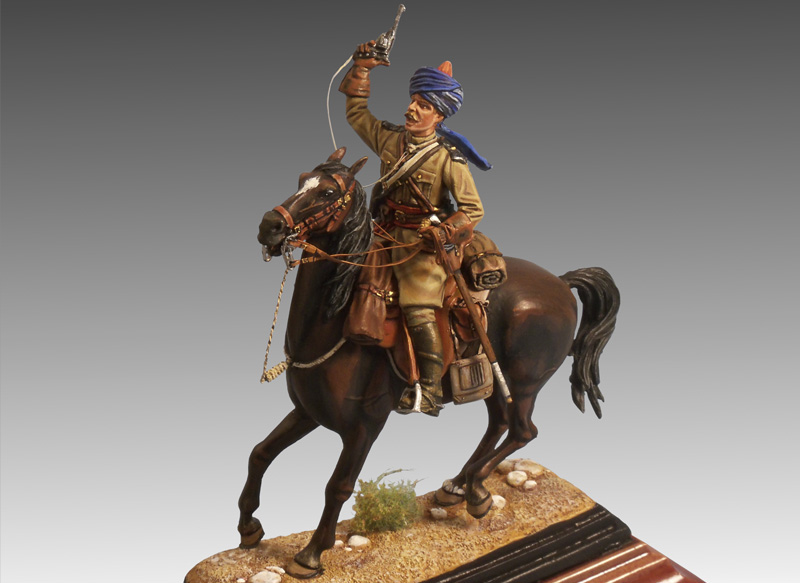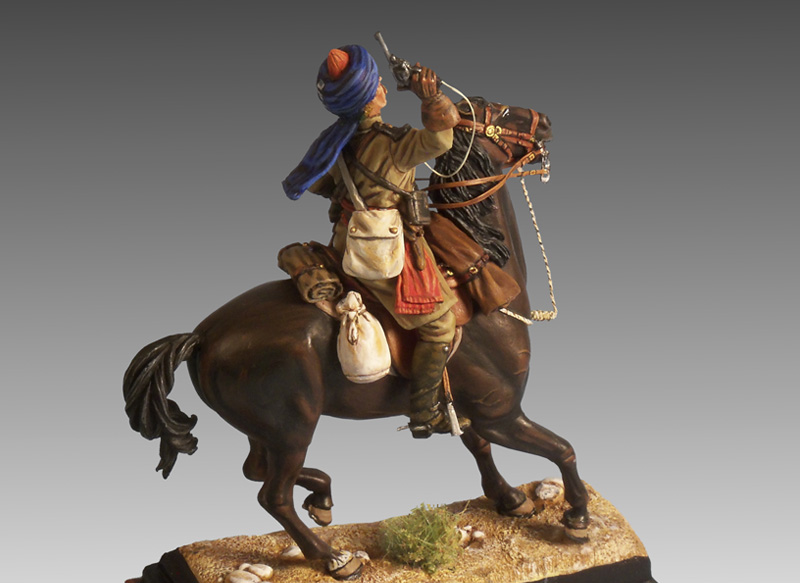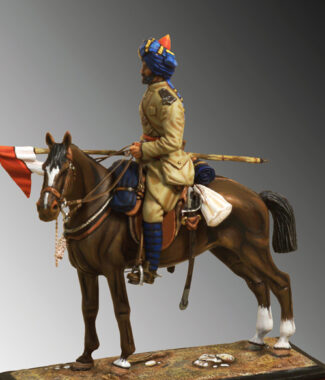It collaborated, assuming functions of the infantry, digging trenches. Later it was destined to the western front and took part in the battles of the Somme, Bazentin, Flers-Courcelette through the Hindemburg line and also in the battle of Cambrai.
In 1918 it was transferred to the Middle East with the Expeditionary Force of Egypt (10th Cavalry Brigade, 4th Cavalry Division of the Desert Mounted Corps). It participated in the campaigns of Palestine and Sinai, taking part in the conquest of the Jordan Valley. It was present at the end of that year in the last battles of the Mesopotamia campaing against the Ottoman Empire and definitively returned to India in 1920.
The uniform that was first assigned to the troop was dark green with scarlet facings and silver lace, the change from green with light blue facings coming in 1886. The turban was dark blue with bluish-grey stripes.
From 1897, the khaki colour was adopted for the drill and campaign uniform. The turban of this uniform remained light blue, with red kulla, as you can see in the figure, which represents a British officer in the 1918 campaign in Mesopotamia. The officer wears a red kummerband and both boots and leggings are brown leather. The rest of the equipment corresponds to that of the officers in campaign during World War I.
The cruppers was discarded since 1890. Final pattern saddle was adopted. Breastplates had by this time been discarded, their main use for many years having been as a means of displaying a regimental crest on ceremonial occasions.
.








Reviews
There are no reviews yet.